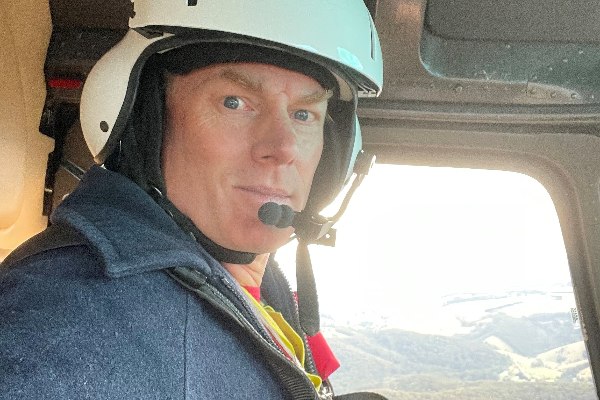
Michael Ryan always wanted a job where he would be out in the field. He grew up on a bush block east of Melbourne, in Smiths Gully, just south of St Andrews.
Forestry, he says, was 'the perfect fit'.
'I love it,' he says. Michael started out completing a Bachelor of Forest Science at University of Melbourne, before taking on his first role in far East Gippsland.
'I was living in Marlo by the Snowy River and working in the forests of far East Gippsland from Orbost through to Cann River and up to Bendoc.'
His role there was wide-ranging, including harvesting, regeneration and bushfire response. From there he shifted to Powelltown, focused on planning for harvesting and regeneration of ash forests before working in the forests of North East Victoria researching regeneration and developing more suitable silvicultural systems to match forest types. His forest science background was then engaged through the Commonwealth during the development of Regional Forest Agreements, while he studied photography then worked on his Masters at ANU.
New role plants new seeds
Michael is now a member of DEECA's Forest and Fire Ecology team, who work to understand the interactions of flora, fauna and ecosystems, and how they can be managed for the best possible outcomes.
'I am only new, so my role is still taking shape, but we're working through how it can have the greatest value.'
He joined DEECA from VicForests following the cessation of timber harvesting; one of a cohort of former VicForests staff who have brought their expertise to DEECA.
'I had a few roles at VicForests. I was working initially as the Silviculture Manager in ensuring forests regenerate after harvesting and then for the past decade as the VicForests Forest Scientist. A large focus was on fauna management and development of silvicultural systems to cater for wildlife. In addition, I had my fire role as a fire behaviour analyst, generally at the State Coordination Centre'.
Much of his work was in the field, completing surveys and conducting training.
'I would help staff or sometimes external people to understand things like tree maturity, seed crop development, seed maturity, or tree species identification.'
That kind of information helps to manage forests in a way that is highly visible for communities.
Following the 2006 Great Dividing Range fires, Michael was part of a team that helped to reseed the Alpine ash forest at risk of regeneration failure due to the poor and immature seed crops.
'Seed maturity for Alpine Ash isn't typically until February, but the fires happened in December. We (VicForests and the then Department of Sustainability and Environment) assessed these forests, then ran a big seeding program to help the forests regenerate.
'If the seeds are not mature they have low rates of germination and those that do germinate can have low vigour.'
After the fires we assessed these forests, then ran a big seeding program to help the forests regenerate. If the seeds are not mature they have low rates of germination and those that do germinate can have low vigour.
Chase your dreams
Michael’s advice for people wanting to a pursue a career in science is to do something you really want to do.
‘Do something you would be happy to do even if you weren’t being paid for it’.
He says initiatives such as National Science Week help raise vital awareness of careers in science, but also the requirement for good science to support good decision-making.
Of his own dreams, Michael says he’s looking forward to getting back to some more fieldwork in his new role, while also planning further studies.
Find out more
Go to the National Science Week website to find out more about what's on and how you can get involved
Page last updated: 06/08/24